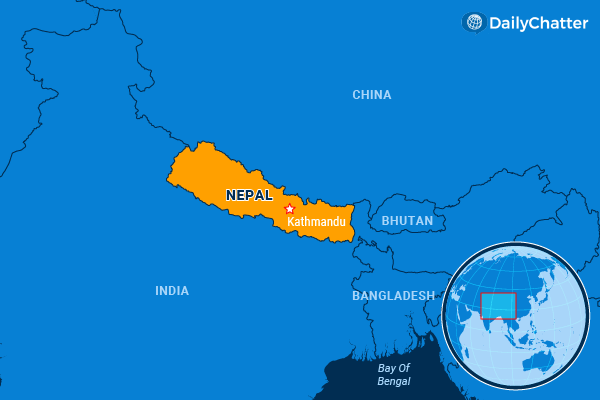
The World Today for November 24, 2023
NEED TO KNOW
Hot Top of the World
NEPAL

United Nations Secretary-General António Guterres recently journeyed to the foot of Mount Everest in Nepal to issue a warning.
He and his colleagues want to prevent Earth’s temperature from rising by more than 1.5 degrees Celsius compared with preindustrial times, reported Euronews. In the last 100 years, the temperature has risen by about half that much, meaning humans must do much more to reduce the greenhouse gas emissions that cause climate change.
But in the Himalayas, the problem is worse. A third of the ice on Nepal’s mountains, for example, has melted in the past 30 years due to global warming, said Guterres. “I am here today to cry out from the rooftop of the world: stop the madness,” he said, adding that the world needed to bring the “fossil fuel age” to an end.
Climbers who have scaled Mount Everest, the tallest mountain in the world, have noted that the peak is dryer and greyer than what previous generations would have encountered, Reuters reported. Scientists have also forecast that glaciers in the mountainous region could lose as much as three-fourths of their volume by 2100. Their absence could lead to serious water shortages.
Climate change has harmed Nepal in other ways. Monsoons have caused floods and landslides, leading villagers to flee destroyed villages, wrote Asia News Network. Warmer weather has also attracted mosquitoes that have brought new diseases like dengue, added Foreign Policy magazine. The country needs major investments to deal with these shifts, especially because many Nepalese have built their homes on steep slopes that are changing as the ice melts and more water flows down, the World Bank found.
These issues might have been at the forefront of the minds of officials from around the world who elected Nepali atmospheric scientist Maheswar Rupakheti to the Intergovernmental Panel on Climate Change. He’s the first Nepali on the panel, noted Third Pole, an environmental organization that works in the Himalayan region.
Working with the UN as well as European partners, the Nepalese government has adopted a plan to deal with these challenges as much as possible, argued researchers in an opinion piece on environmental news site Mongabay. This plan likely needs to focus more on the lowest classes of Nepali society, they said, but the country has the capacity to improve. Nepal has been open to new projects to combat climate change, like new agricultural techniques, for example.
It’s a small country, however, whose fate is largely in the hands of other countries and their tolerance level for pollution.
To read the full edition and support independent journalism, join our community of informed readers and subscribe today!
Not already a subscriber?
If you would like to receive DailyChatter directly to your inbox each morning, subscribe below with a free two-week trial.
Support journalism that’s independent, non-partisan, and fair.
If you are a student or faculty with a valid school email, you can sign up for a FREE student subscription or faculty subscription.
Questions? Write to us at [email protected].
